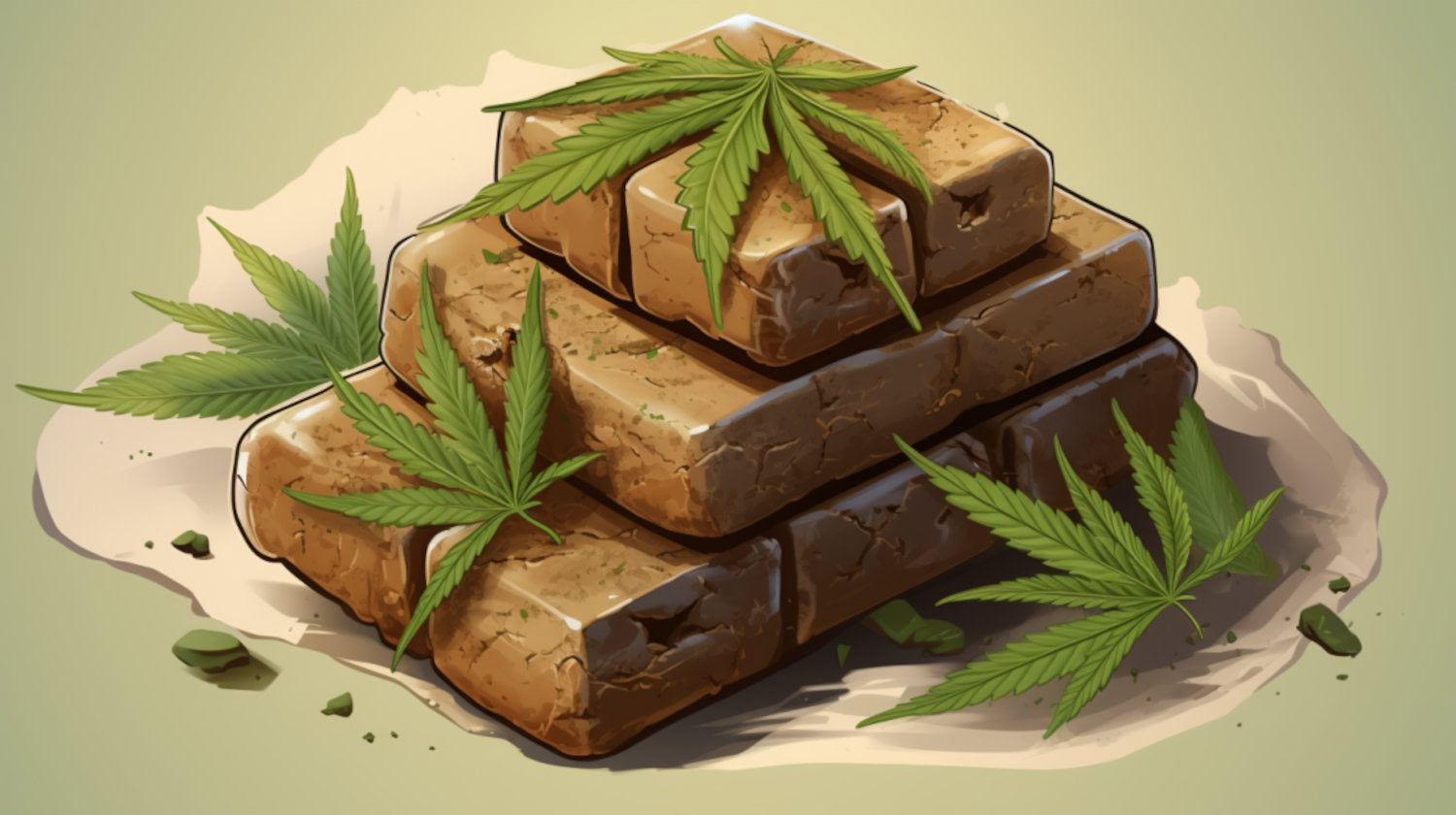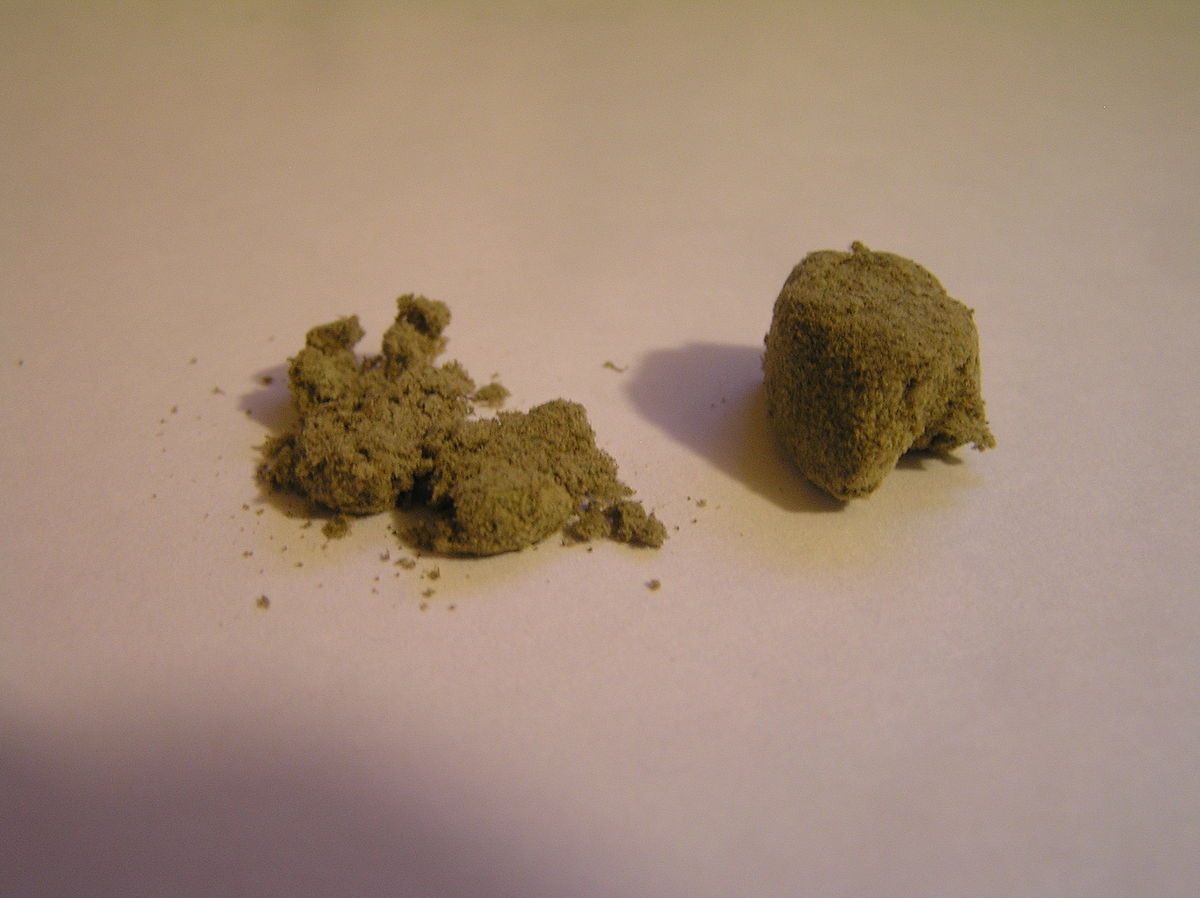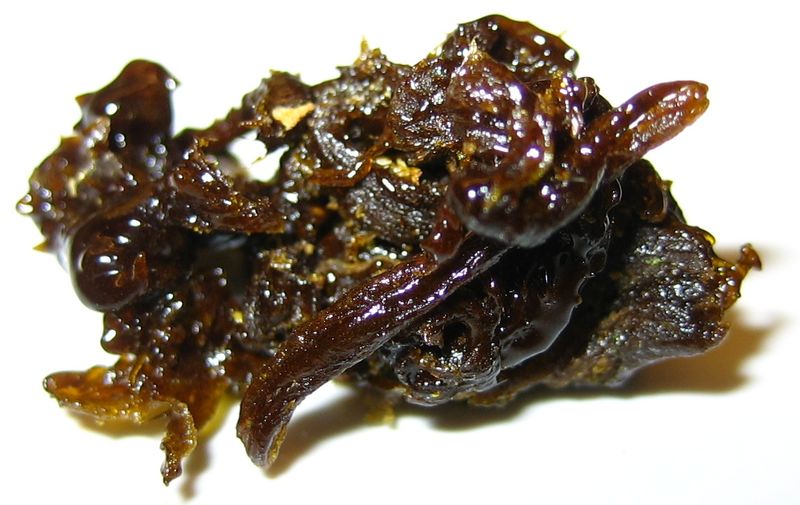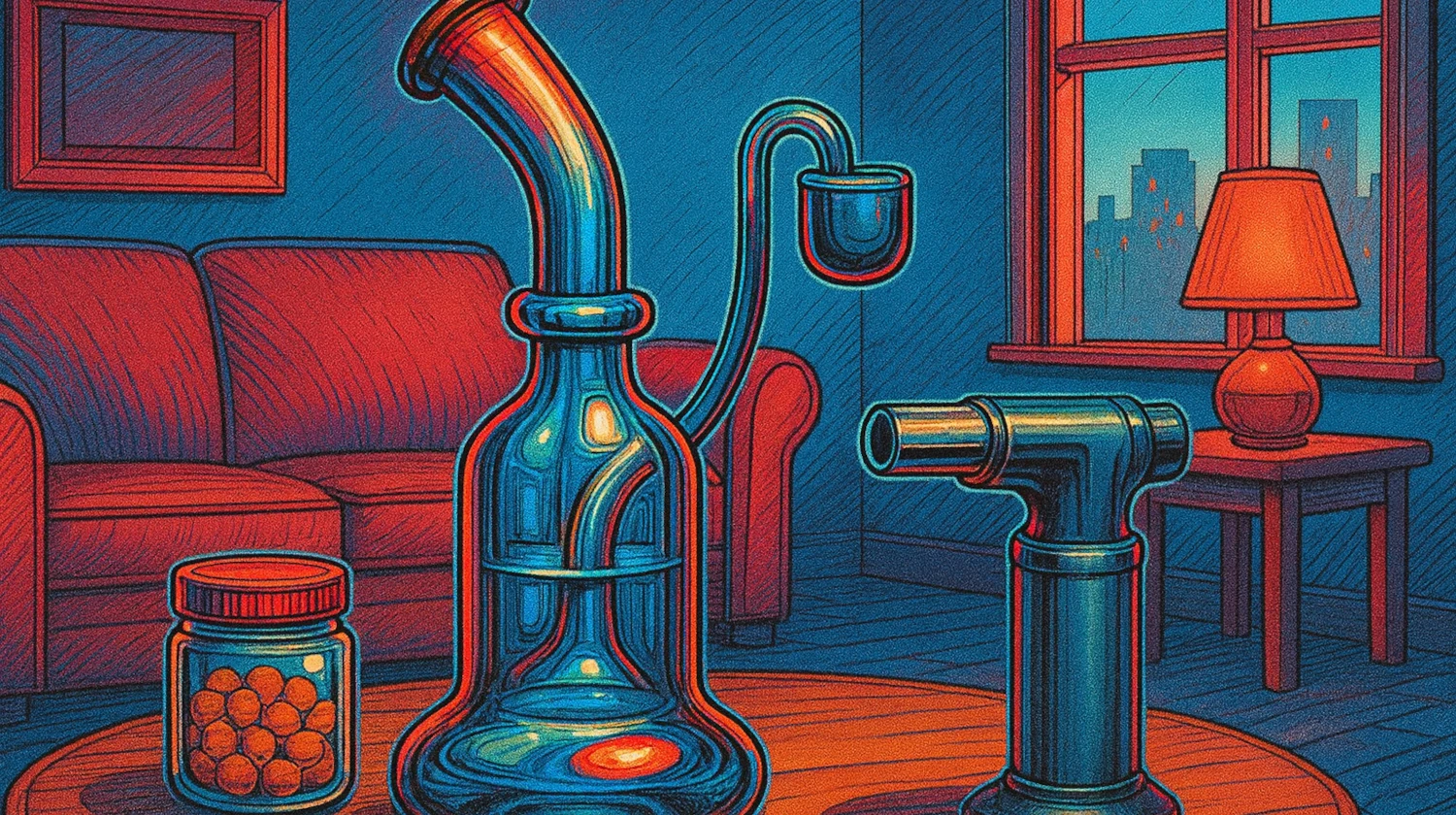Key Takeaways
- Hashish – better known as hash – is a block of concentrated cannabis made by compressing THC-rich kief.
- You can make hash by pressing kief into a block using a specialized press or heavy objects, either with or without heat.
- Hash can be smoked in pipes or bongs, or it can be added to joints to increase potency.
The word "hashish" derives from Arabic and translates directly to "grass." A putty-like concentrate melding the cannabis plant’s gluey, resinous elements, hash is a powerfully pungent product that is unique from the plant itself in terms of its consistency, appearance, and how much it tickles your cannabinoid receptors into action.
According to the Drug Enforcement Administration (DEA), hash is a concentrated form of cannabis. Enriched with high levels of the mind-altering cannabinoid THC, hash's first use traces to Afghanistan, the Middle East, Pakistan, and North Africa, with the bulk of early hashish production taking place in Morocco in the 1960s.1
Well-produced hashish is typically two or more times as potent as cannabis flower, coming in anywhere between 40% and 60% THC or more. The brownie-like malleable concentrate is soft enough to break into smaller segments with the fingers before sprinkling into a joint or topping off a bowl.
Although produced using cannabis, hash does not exhibit the verdant green hue that the plant does. Varying on a spectrum of reddish-brown to black, often with slight dark green tints, this potent cannabis flower resin has been found in nine Egyptian mummies dating from 1070 B.C. to 395 A.D. Considering its rich potency, aroma, ease of use, and straightforward preparation; there's no wonder why the ancient Egyptians gave hash the green light, too.
Fast forward to the modern day, and concentrates are in the top five revenue-generating cannabis products. Plus, thanks to the popularity of owning a grinder with a built-in kief chamber, consumers have ample opportunity to make their very own pliable and potent hash from home.
What is Hash?
The snowflake-like cannabinoid-filled trichomes found on cannabis flower can be separated in a number of ways to form a powdery concentrate known as kief, which in its original Arabic form, kayf, translates to "intoxication" or "pleasure."
Kief is the primary ingredient in making hash. It can be collected using a four-piece grinder, which captures the kief as it passes through a mesh screen. Once a desirable amount accumulates, you can compress this concentrated byproduct of cannabis using a homemade or store-bought pollen press and make hash. Making hash by manually separating trichomes with other techniques, such as dry sift and ice water extraction, is also possible. This manual process typically involves further processing the hash into what is called "hash rosin," a highly desirable and dab-able concentrate.
The final result is an easily storable product that is even more potent than the kief used to create it. Hash potency is often on par with dabs or waxes, favored by consumers who want maximum effects from minimal tokes. Refrain from using hash with dab or wax gear (such as a vape pen), however, since hashish is a thicker substance that still contains plant material that may leave a stubborn residue.
Similarly to kief, you can sprinkle hash into the bowl of a smoking pipe or bong or add it to joints for fast effects and a rich taste. Hashish is also soluble in food carrier ingredients, including oils, butter, and creams, making it suitable for baking into edibles.
How Is Hash Produced?
The production process determines the type of hash. Listed below are a few examples:
- Charas - Otherwise known as "fresh hash," this straightforward production technique involves rubbing the live plant's fresh buds until the concentrated cannabis gets stuck to the hands. Ibn Wassyah mentions this technique in a text dating back to the 10th century in Persia, but it was also widely practiced in the Himalayas, India, Nepal, Pakistan, and Nepal.1
- Dry Sift Hash - Acknowledged as one of the oldest hash production techniques, dry sift hash, otherwise called "dry sieve," is produced by rubbing cannabis against the delicate mesh to capture fallen trichomes. A powdery resin accumulates in the lower chamber as the kief passes through the screens. Once a generous amount is collected, you can apply heat and pressure to create a super-strong hash.
- Jelly Hash - If you fancy a dash of luxury, this is the one for you. Due to the difficulty level associated with producing jelly hash, the price tag is usually higher. This bubble hash and hash oil blend has a gelatin-like consistency and dark green tint. Aside from smoking, you can learn how to make your own edibles with jelly hash.
- Bubble Hash (Ice Water Hash) - Bubble Hash requires ice-cold water and filter bags. The temperature helps to separate the trichomes from the plant material. After stirring the cannabis in ice-cold water, the brittle trichomes and resin sink, leaving the plant material to float. This mixture is poured into mesh bags, resulting in pure kief that you can further press into hash rosin.
- Hash Rosin - Hash rosin is considered one of the purest types of hashish. Safe to produce, natural, and solvent-free, rosin is a delicate type of hash that burst onto the cannabis scene sometime in 2010. Hash rosin is made by pressing ice water hash using two heat plates and a micron bag. The end result is a naturally delicious concentrate you can add to a bowl or joint or take a low-temp dab.
Hashish Effects: How Strong is Hash?

The THC concentration of hash depends on the type of strain used to create the hash, as well as the technique used to make it. Refinement plays a significant role in potency - the more refined the finished product, the more THC you'll have left over.
Although the THC potency fluctuates, hash usually contains between 30-80% THC. Top-quality bubble hash or hash rosin may boast a THC content of 60-80%, and many consumers report experiencing a more intense "high" after smoking hash than they do with cannabis flower or oil extracts.
Data gathered from 720 American hashish users over three years found that inhalation of cannabis does not cause any "ostensible adverse effects." Researchers analyzing the results of direct medical and psychiatric observations confirmed minor respiratory ailments among consumers who smoked 10 to 12 grams of hashish monthly.
Hashish's desirable effects may explain why Iraqi alchemist Ibn Wahshiyya hailed it as a diverse substance in his 10th-century Book of Poisons, and religious leaders acknowledged its uses in 11th-century Muslim texts.1 Despite the many pleasant psychological hashish effects, you must make yourself aware of potentially unpleasant side effects more commonly associated with high doses of THC, such as increased risk of anxiety, paranoia, and increased heart rate. Infrequent adverse effects, such as psychosis, may also surface and are more likely to occur when hashish is consumed with alcohol or other psychoactive drugs.
What Does Hash Look Like?
Hash takes on many different hues of brown, deep red, yellow, black, and dark green, depending on how much plant material is contained in it. Chlorophyll is the primary culprit that causes hash to turn dark green or brown. Dry sift is a creamy shade, similar to cloudy honey, whereas bubble hash typically has a light tan color, and charas are dark green or brown. When hashish is broken or cut, the inner, nougaty walls display flecks of compacted kief with a subtle green shimmer.
Hash vs Weed: How Do They Compare?
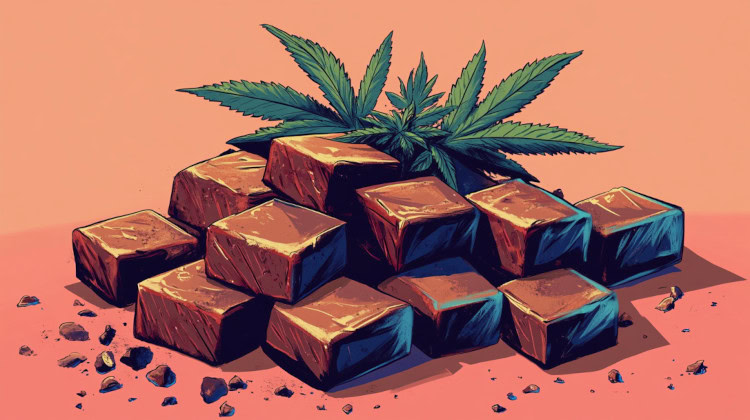
Cannabis and hashish are derived from the female cannabis plant. Cannabis flower is the plant when left in its natural state. In contrast, hash is created from the collected trichomes found on the flowers of the cannabis plant. To further process it, heat and pressure can be used to reach optimum potency — each product's appearance, texture, flavor, and potency are also different.
How consumers use hash vs weed also differs slightly, but both types of cannabis products can be smoked or baked into edibles. It is possible to prepare a hash mix and add it to a dry herb vaporizer, but if the device is incompatible with hash, you risk damaging it and losing precious products.
Properly produced hashish may contain up to three times the THC contained in raw cannabis flower. Cannabis' primary intoxicating compound, tetrahydrocannabinol (THC), rests at around 24-32% in the most potent strains of weed, but hash fluctuates in the realm of 40-80%, hence why smoking hash is a popular option.
You can make hash from home using shake weed or kief from your grinder, but with such a tasty variety on offer at dispensaries, most consumers find the DIY option unnecessary.
Smoking Hash: Different Methods Compared
There are a handful of ways to get your daily dose of hashish. Some methods are more convenient and efficient than others, and it may take some trial and error to decide which technique you prefer.
Here are a few ideas for enjoying this cannabis concentrate:
- Add Hash to a Rollable Product - If you aren't ready to transition from good old cannabis flower, you can mix things up by adding a few tiny blobs or "worms" of hash to the roll-up.
- Vaporize/Dab Hash - To properly vaporize or dab hash that hasn’t been further processed to hash rosin, you will need a specialized concentrate insert that can be loaded into your vaporizer device's chamber, or you can mix it in with some flower for use with a tabletop vaporizer.
- Top a Bong or Pipe with Hash - Indulge in a cool and smooth hit of cannabinoids and terpenes by loading your bong bowl with some fresh hash and your favorite flower. Once your bowl is packed, fill the bottom chamber with fresh water and ice. Alternatively, carry a weed pipe in your pocket and cram it with the hash for instant access.
How is Hash Made? Can You Make it at Home?

Homemade hash is a wonderful option for making the most of your kief. Plus, since there is more than one method of making hash, you can easily experiment without complex tools and equipment.
So, how can you make hash from home?
This step-by-step guide will teach you how to make ice water hash. Here's what you'll need:
- A weed grinder
- Water at 32ºF
- Ice
- Mesh net hash bags (your choice of 160, 120, 73, or 25-micron size gaps depending on the scale of production)
- Large plastic container
Once your equipment is ready, follow these steps:
- Line the large plastic container with your mesh bags. When choosing a size, consider that one micron is equivalent to 1/1000th of a millimeter.
- Use the grinder to pulverize your flower.
- Add ice and water to the container, then add a layer of flower.
- Continue adding a layer of ice and water, followed by a layer of flower, until the container is full.
- Allow your cannabis leaves, buds, kief, and trim to soak for 20 minutes.
- Stir the mixture to help detach the resinous trichome glands from the plant material.
- Remove the bag and strain.
- Press out any excess moisture from the remaining resin.
- Freeze or dry in a cool area, and voila!
Store your hash properly in an airtight container away from direct sunlight to prevent it from drying out too much. Extend the shelf life of solventless hash by storing it inside a refrigerator, or if you make water hash, consider freezing it.
References
- Nahas GG. Hashish in Islam 9th to 18th century. Bull N Y Acad Med. 1982;58(9):814-831. ↩︎
The information in this article and any included images or charts are for educational purposes only. This information is neither a substitute for, nor does it replace, professional legal advice or medical advice, diagnosis, or treatment. If you have any concerns or questions about laws, regulations, or your health, you should always consult with an attorney, physician or other licensed professional.

